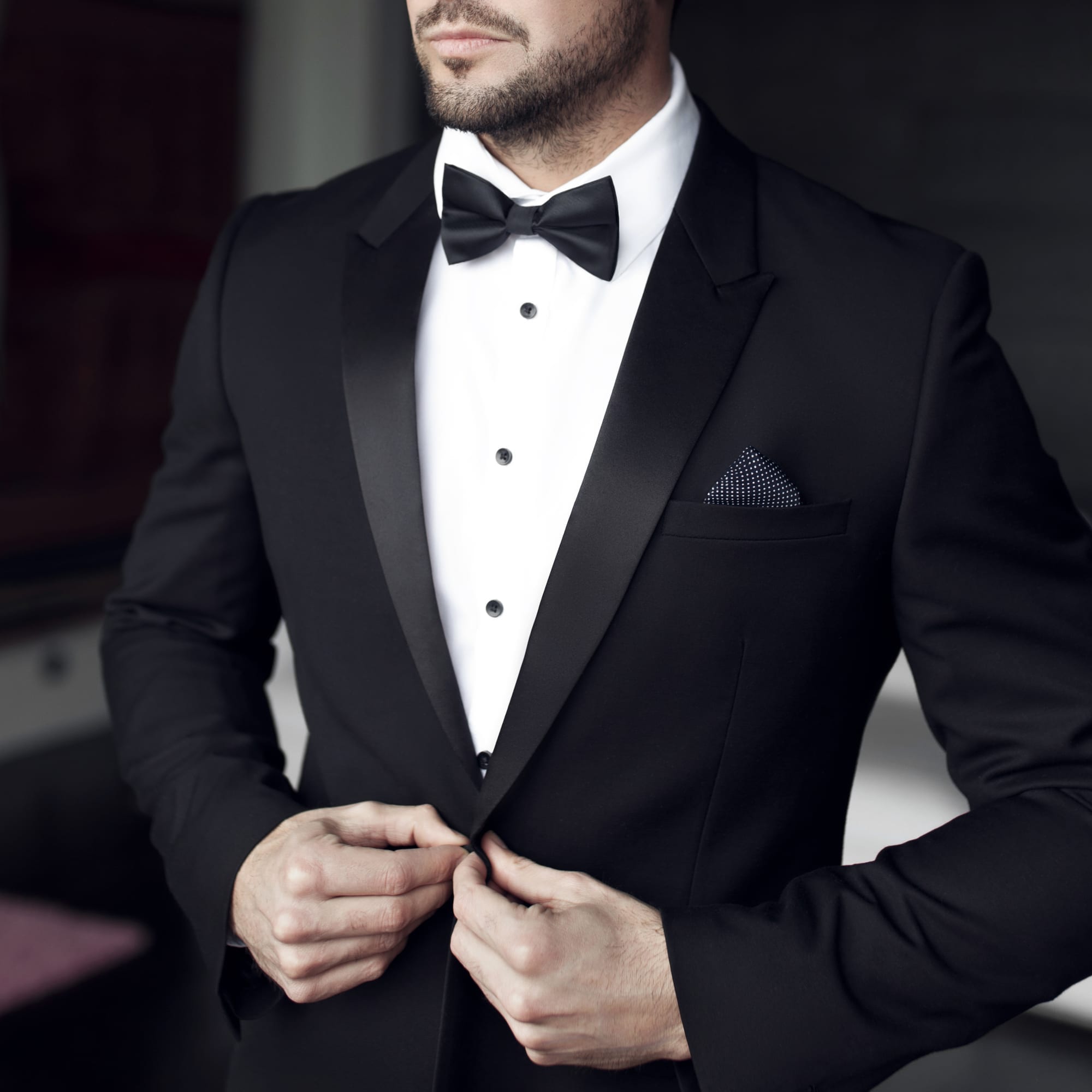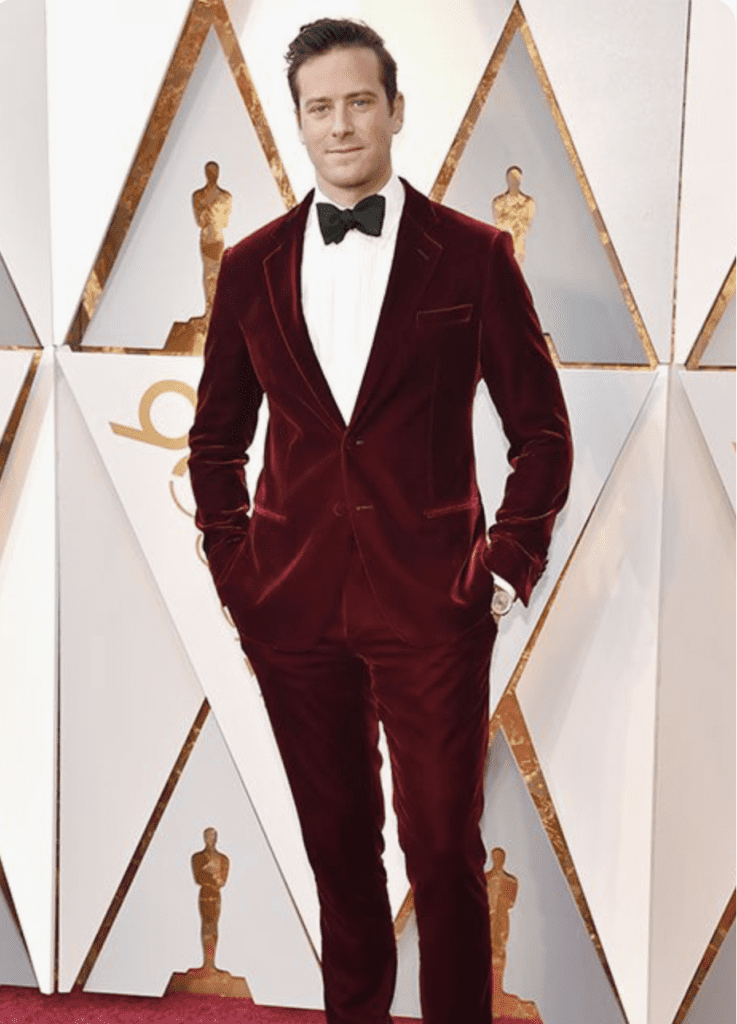The Black Tie Dress Code for Men

There was a time when black tie dress code was de rigueur, especially among the aristocracy.
If you’ve ever seen an episode of Downton Abbey, you’ll note that while “downstairs” wear the uniforms and livery of household servants at all times, those “upstairs” dress for the occasion, including changing into either black or white tie for dinner every night.
The interesting historical twist is that the tuxedo style we know today as black tie actually began as a “less formal” way to dress for dinner, adopted by the Prince of Wales in the 1860s. Gentlemen were tired of always having to mind their tailcoats and the Prince’s adoption of the new style ensured it was exported around the world (whereupon “tuxedo” was coined from the New York club of the same name).
These days, there are few expectations when it comes to dressing for dinner, especially in your own home. On the other hand, there are occasions where you’ll be expected to don black tie.
In fact, we’ve flipped the notion of “less formal” so that black tie is now one of the most formal ways of dressing (aside from white tie, where you still need your tailcoat). For many men, black tie will be the most formal way in which they’re ever expected to dress and it will only come up for occasions such as weddings, balls or formal fundraisers.
What are the “rules” for black tie in modern times? Let’s take a look:
Definition of black tie
In general, most black tie affairs will be in the evening, although you may strike an afternoon wedding or premiere that is designated black tie. The bottom line is that the event is “fancy” and men should wear a tuxedo.
For some common examples, look at pictures of awards ceremonies such as the Academy Awards or the BAFTAs. Most of the time, you will see men dressed in black tie, although you will also see some interesting variations. Fashions have changed and it’s not essential to wear all black, all the time.
If you’re not used to this level of formality, dressing for the occasion can seem daunting, but it’s a great opportunity to look your best. The key lies in the details – the fit of the tuxedo, the tie of the bow tie, to wear a cummerbund or not?
The origins of black tie actually have it as a less formal way of dressing Share on XRequired black tie clothing
If you’ve got a black tie invitation waiting, here are a few essential items:
1. The dinner jacket.
The most traditional form of dinner jacket is black with black silk or satin lapels. The lapel type of the traditional jacket is usually a notch lapel. Alternatively, you might find shawl or peak lapel jackets. Your old wedding tuxedo will not work in today’s fashion environment. Don’t think you can get away with something that is outdated.

Depending on the event, you may have some leeway with the color of your dinner jacket. Traditionally, it was more a midnight blue than black as this color appears black under artificial lighting. You might also choose a white dinner jacket in the summer, or even a pattern jacket or velvet jacket in color. Again, look at those award ceremonies – people often have a different, yet still compelling take on black tie.

As you can see, color may in fact be flexible depending on the occasion, however we’d suggest taking the traditional approach unless told otherwise for weddings. There are factors such as the photos to be considered.
In terms of trousers, black is usually the safest bet, including with a white dinner jacket. In the picture above, Armie Hammer could have chosen black trousers instead of the matching velvet pair – he still would look well put-together.
Tradition has it that the dinner jacket is always worn with the top button fastened, unless seated. It is said that this is because the Prince of Wales used to struggle to button his coat if he had overindulged at dinner, so his companions undid theirs in order to avoid offending him.
Of course, the other key to looking sharp is that your dinner jacket is well-fitted to you. Fit makes all the difference – you can look good in a sack if it has been tailored to fit you. This means paying attention to fit around the shoulders, the length of the arms and that the overall body of the jacket isn’t too tight or too loose. (Again, not your old wedding tux that is in the back of the closet.)
2. The trousers.
If you’re going for the traditional black tie look, then black (or midnight blue trousers) are the obvious choice and should match your dinner jacket if the jacket is in black.
As with the examples shown for dinner jackets, you might choose to go with another color for trousers, but black is the “safest.” We’d never pair white trousers with a tuxedo jacket for black tie wear.
Again, fit is very important to achieve a polished look. Trousers should not be cut so low that there is a gap between the waistcoat and band seam of the trousers, or a gap showing shirt. Trousers should fit comfortably at the hips and be tailored to suit.
3. Dress shirt.
The traditional black tie shirt is white, pleated, has a spread collar and holes for cufflinks on the sleeves.
Most of the time, no matter the color of the tuxedo, the shirt will be white. It too should be well-fitted to the individual.
4. Bow tie.
The traditional bow tie is black, but other color variations are acceptable these days. The exception to this is white – white bow ties are reserved for white tie events. A long tie is also acceptable if pattern and color work with your date’s outfit.
For an elegant look, bow ties should be hand-tied rather than pre-tied. If wearing a bow tie is a rarity and you’re unsure how to tie a bow tie, our associates can provide lessons or tie it for you with an easy velcro or clip connection in the back.
5. Dress shoes.
Black patent leather is the classic choice here. Something a little more fancy than the black leather shoes you would wear to the office.
6. Evening socks.
Socks should always be worn with a black tie outfit. This would traditionally be a dress sock made from a silk blend, usually in black.
7. Waistcoat (optional).
A waistcoat is an optional add-on to a tuxedo and the third piece in the term “three piece suit.” Traditionally, it too would be a matching midnight blue or black for the rest of the suit.
An important point for wearing a waistcoat is its fit and length. It should be long enough that there isn’t a visible gap to the band of the trousers. It should also be well-fitted rather than loose.
8. Cummerbund (optional).
If you’re not wearing a waistcoat, a cummerbund is another option. This broad waist sash is worn to cover the waist area, again so there is no gap to the band of the trousers.
The traditional cummerbund is usually black and pleated (pleats are worn up to catch the crumbs per days of old).
9. Accessories.
You may have cufflinks to wear with your tuxedo. The key to accessories is not to mix the metals. So your cufflinks, watch and wedding ring should ideally be of the same metal.
Final thoughts
If you’re not used to wearing black tie, the idea can seem daunting at first but in reality, it’s quite a simple style. We’d suggest sticking with a traditional approach unless your invitation says something like “black tie creative,” which invites colorful variations.
As always, your tailor is in the best position to help ensure you get a good fit and look your best for your event. Make sure you book early to be fitted.

